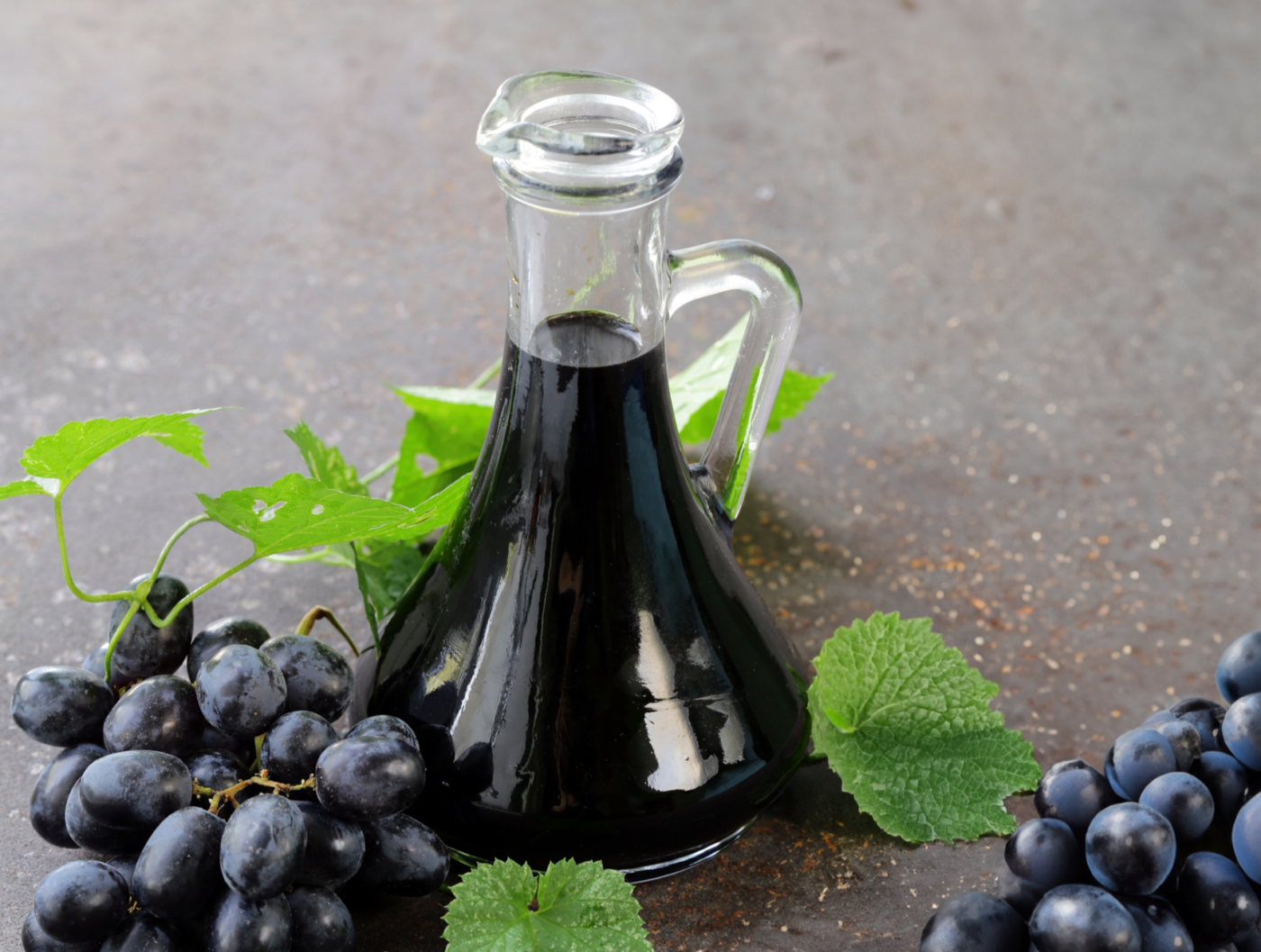Read More: Culinary History of Balsamic Glaze Vinegar
Ancient Roots: The Birth of Balsamic Vinegar
The story begins in the Emilia-Romagna region of Italy, specifically the provinces of Modena and Reggio Emilia. As early as the Roman Empire, the practice of cooking grape must (freshly pressed grape juice) to create a sweet syrup called “sapa” or “defrutum” was well-established. This syrup was used as a sweetener, a preservative, and even a medicinal remedy.
Fast forward to the Middle Ages, and the foundations of what we know as balsamic vinegar began to take shape. Historical records from the 11th century mention the production of a special vinegar in the Canossa Castle near Reggio Emilia, hinting at the early development of this unique product.
The true flourishing of balsamic vinegar, however, occurred during the Renaissance. Noble families in Modena and Reggio Emilia, particularly the Este Dynasty, embraced the production of this “royal vinegar” as a symbol of prestige and refinement. They established elaborate “acetaie” (vinegar lofts) in their estates, where balsamic vinegar was crafted with meticulous care and aged for years, sometimes even decades, in a series of progressively smaller wooden barrels made of different types of wood, such as oak, chestnut, cherry, juniper, and mulberry.
A Slow Maturation: Balsamic Vinegar Through the Centuries
For centuries, balsamic vinegar remained a closely guarded secret, a treasure cherished by the aristocracy and rarely shared with outsiders. It was used sparingly, often as a digestive aid, a tonic for various ailments, or as a luxurious gift for esteemed guests and dignitaries.
The 19th century witnessed a gradual shift. Balsamic vinegar started to gain recognition beyond the confines of noble estates. Production increased, and although still considered a luxury item, it became more accessible to a wider population. It began appearing in local markets and was gradually incorporated into the regional cuisine, adding its unique flavor profile to traditional dishes.
The 20th Century: From Regional Delicacy to Global Phenomenon
The 20th century marked a turning point for balsamic vinegar. As Italian cuisine gained global popularity, so did this unique condiment. Traditional balsamic vinegar, with its complex flavors and lengthy aging process, became highly sought after by chefs and food enthusiasts worldwide. It’s protected designation of origin (PDO) status, awarded by the European Union, further cemented its reputation as a high-quality, artisanal product.
The Birth of the Glaze: A Modern Culinary Innovation
While traditional balsamic vinegar was enjoying its moment in the culinary spotlight, a new innovation was brewing. The precise origins of balsamic glaze are somewhat murky, but it likely emerged in the late 20th century or early 21st century as a response to several factors:
- Demand for a Thicker Consistency: Chefs and home cooks were looking for a way to achieve the intense flavor of balsamic vinegar in a thicker, more viscous form that would cling to food and create attractive presentations.
- A More Affordable Option: Traditional balsamic vinegar, especially the “tradizionale” variety aged for 12 years or more, can be quite expensive. Balsamic glaze offered a more affordable alternative with a similar flavor profile.
- A Sweeter Palate: The modern palate often favors sweeter flavors. Balsamic glaze, with its concentrated sweetness achieved through reduction and often the addition of sweeteners, catered to this preference.
It’s probable that both chefs and home cooks independently experimented with reducing balsamic vinegar to create a glaze-like consistency. Soon, commercial producers picked up on this trend, and balsamic glaze vinegar began appearing on supermarket shelves, quickly becoming a popular pantry staple.
The Glaze Today: A Culinary Staple
Today, balsamic glaze vinegar is a ubiquitous condiment found in kitchens across the globe. It’s used in a wide range of dishes, from salads and appetizers to main courses and even desserts. Its versatility and intense flavor have made it a favorite among chefs and home cooks alike.
- Salads: A drizzle of balsamic glaze adds a burst of flavor to salads, complementing the freshness of greens and the richness of other ingredients.
- Roasted Vegetables: Glazing roasted vegetables with balsamic adds a touch of sweetness and acidity, enhancing their natural flavors.
- Grilled Meats and Seafood: Balsamic glaze creates a beautiful sheen and a delicious sweet-and-sour glaze on grilled meats and seafood.
- Cheese and Fruit: The complex flavor of balsamic glaze pairs beautifully with cheeses, particularly aged cheeses like Parmesan and Pecorino, as well as fruits like strawberries, figs, and pears.
- Desserts: Even desserts can benefit from a touch of balsamic glaze, adding an unexpected depth of flavor to dishes like panna cotta, ice cream, and even chocolate cake.
The Future of the Glaze: Continued Evolution?
The culinary journey of balsamic glaze vinegar is far from over. As consumer preferences evolve and culinary trends emerge, we can expect to see further innovations in the world of balsamic glaze. This might include:
- Flavor Variations: Experimentation with different types of sweeteners, spices, and herbs could lead to new and exciting flavor profiles.
- Healthier Options: Producers might focus on creating lower-sugar or no-sugar-added versions to cater to health-conscious consumers.
- Artisan Glazes: Smaller, artisanal producers might emerge, focusing on high-quality ingredients and unique production methods, similar to the resurgence of craft breweries and distilleries.
Conclusion: A Legacy Continues
Balsamic glaze vinegar, while a modern creation, carries with it the rich legacy of traditional balsamic vinegar. Its journey from an ancient elixir to a global culinary staple is a testament to the enduring appeal of its unique flavor profile. As we continue to explore new culinary frontiers, balsamic glaze vinegar will undoubtedly remain a beloved ingredient, adding its distinctive touch to dishes around the world, bridging the gap between tradition and innovation on our plates.


Share
Click on the icons below to share "Title of the item to share"